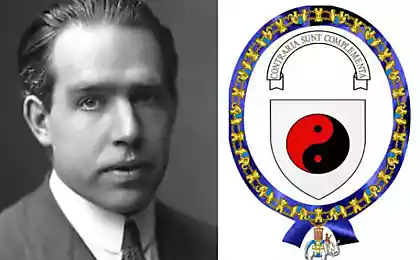
The goal of physics as a science is the study of the classical laws of our world. Most of these patterns has been studied enough to apply them in everyday life. And modern physicists have decided to change the scale of research, both in one and in the other side.
We consider two fundamental physical theory. The first of them - is familiar to all the general theory of relativity. Relativity theory answers the questions of the origin and evolution of the universe and explains well the large-scale behavior of the cosmos. Second - quantum mechanics - on the contrary, has achieved great success in explaining the physics of the microworld. Uniting these two theories and obtain an almost complete picture of the universe: from the internuclear interactions to the behavior of galaxies.
However, to obtain a unified picture of the world, there is one catch: these scaling theory, confirmed by the set of calculations and experiments, completely incompatible. Every theory of their bases, their mathematical and physical principles. The application of quantum mechanics to galactic interactions, as well as the use of the theory of relativity for the study of nuclear interactions leads to absurd results. Only one solution: to invent a new theory, which would be consistent with both the theory of relativity and quantum mechanics, and at the same time uniting them. Creating a unified theory of everything - the main task of physicists since Einstein. One of the candidates for the unified theory is string theory.
A Little History h4>
It all began, as usual, with mathematics. In the 18th century, the famous mathematician Leonhard Euler studied the properties of the functions that he himself had invented. One such feature is the Euler beta function. It looks like this:

Not too difficult for people familiar with integral calculus. Euler described the properties of the function, and not finding practical applications, two centuries beta function has been forgotten.
In 1968, a young physicist Gabriel Veneziano, who works at the Swiss CERN, accidentally discovered that all the properties of the particles involved in the nuclear interaction, can be described by the Euler beta function. The formula works fine for the description of particle interactions, but no one knew why. If we take Einstein's famous formula, its physical meaning can be expressed by the phrase "energy is proportional to the mass." A physical meaning of Euler's formula was not - just a variable when you assign specific values to which to obtain results consistent with experiment. Two years later, this meaning was found - the physicists discovered that if you replace the elementary particles oscillating one-dimensional string, the interaction of the strings just represented as Euler's formula. The one-dimensionality means that the thickness of such a string is compared with the length of the infinitely small.

Since the strings are small enough that they look like elementary particles, therefore, does not contradict the already conducting experiments. Now, string theory has changed a lot compared to the original view, but the basic idea remains the same.
Strings as the mechanism of the universe h4>

This picture shows a good enough representation of a typical inhabitant of string theory. In reality, the situation is exactly the opposite: from string theory should all, it is perfectly consistent with both quantum mechanics and relativity theory. In addition to this, the theory also finds an explanation of gravity, which is sought since Newton. Such versatility outweighs some of the absurd idea that all matter consists of tiny strings.
To explain the basic idea of one-dimensional strings of string theory can be represented as usual for us stringed musical instruments. Take, for example, a guitar. Fluctuation of each string has two important properties:
1. Amplitude, responsible for the sound volume.
2. The frequency that determines the pitch of the sound.
Sounds whose frequencies differ less than 1 Hz, almost indistinguishable to the human ear. The greater the frequency of the sound, the less perceptible change this frequency. Therefore, the frequency difference in the music of adjacent notes varies from 1 Hz for low sounds to several hundred hertz to treble. In general, for the performance of musical works we get only a certain limited range of frequencies corresponding to the notes taken. We can play with a frequency of 330 Hz or a frequency F 349 Hz, but the frequency therebetween in the music available to us. This particular kind of oscillation is called mode i>, and the set of all possible modes - range i> oscillations.
From the volume and its fluctuations depends fashion energy fluctuations. Intuitively, one can understand that loud and high-pitched sound has a higher energy than the quiet and low. And now we give our guitar in his hands Einstein, who observed that energy generally speaking proportional to the mass. In string theory, just use this relation: lot i> of an elementary particle is determined by energy i> its string vibrations.
Using a more abstract reasoning, physicists have found that there are other links between fashion strings and particle characteristics, such as the charge of the particle response to gravitational effects, etc. Moreover, the same principle applies not only to the properties of the particles but also the particles themselves. Photons, gluons, u-mesons and other exotic particles are just different modes of vibration of the same string.
This leads to the following conclusion: knowing all the possible modes of string vibration, "notes", which you can play on it, we could explain all the properties of elementary particles. Serious bid for a unified field theory, is not it?
nine-guitar h4>

Consider our guitar by guitarist. The design allows the guitar strings oscillate only in some specific areas. You can hit the strings with the top-down or bottom-up or pull the string away from you and let go. If the string was secured between two points in a free 3rd dimensional space, the number of possible directions of oscillation to increase. With access to a greater number of dimensions than the three we have also increased the number of possible directions of oscillation. However, we are severely limited in three dimensions.
But not in string theory. Upon further investigation, a new catch: some calculations leads to the impossibility results, such as negative probabilities. Physicists have long struggled with this problem and found a solution that coordinates all calculations: the universe must have ten dimensions - nine spatial and one temporal.
If a time dimension can somehow be reconciled, then where are the six dimensions that we even can not imagine? These six dimensions are minimized - they are so small that in the conventional scale, we can not take them into account. Car, making a circle, back to the same coordinates in three-dimensional space. During this cycle countless times he crosses six folded measurements. However, for very small string coordinates in the folded dimensions are beginning to take a serious value.
What's next? H4>
The development of string theory is unstoppable. Theory with ten dimensions is called superstring theory. When the measurement is not started again consistent with the expected, introduced a new, eleventh dimension. This is how the M-theory: the mention of the names of the strings disappeared because there were two-dimensional analogues of the string - membranes, three-dimensional, four-dimensional strings. Complexity theory is increasing every year, but still its development is not stalled, and she has all chances to ever become a unified theory of everything.
What to read? H4>
1. Stephen Hawking, "A Brief History of Time", "The Universe in a Nutshell", "Theory of Everything» i> - a popular language tells of the modern picture of the world.
2. Brian Greene, "The Elegant Universe. Superstrings, hidden dimensions and the quest for the ultimate theory » i> - a great book on string theory without much physics.
3. Michio Kaku, "Introduction to the theory of superstrings» i> - a major textbook for those who know physics, and wants to know more.
Source: habrahabr.ru/post/219657/




























